New York has beautiful, fully maintained parks like Central Park. It has parks that are barely developed at all, like Calvert Vaux Park. And it has parks that fall somewhere in between. One such is Highbridge Park, a long, strange strip on the eastern edge of upper Manhattan.
A couple of preliminaries: the park's southern tip is at 155th Street, near the eastern edge of the island – but it's West 155th Street. (I never realized that once you get above the low 130s, there are only "West" addresses; Manhattan does not have an East 155th Street.) Anyway, across the street is the Hooper Fountain, an 1894 basin and column originally placed here to quench the thirst of the passing horses. Now it seems oddly positioned, and it's definitely mostly un-noted by the passing hominids.
Anyway, across the street is the Hooper Fountain, an 1894 basin and column originally placed here to quench the thirst of the passing horses. Now it seems oddly positioned, and it's definitely mostly un-noted by the passing hominids.
Across the street, I thought at first this staircase might be an entrance to the park. But it's just a staircase, one that goes very, very far down. And it does presage the steep drops at the edge of the park.

At the foot of the park is a triangular grassy area with the spectacular name "Sugar Hill Luminaries Lawn." When I hear "Sugar Hill" my first thought is of the early rap group The Sugar Hill Gang, but the Sugar Hill neighborhood, which extends north to just about here, was a locus of the Harlem Renaissance of the 1920s. The whole neighborhood is on the National Register of Historic Places, as an informational sign points out.


Highbridge Park starts a couple of blocks inland. But after it zooms north along Edgecombe Ave. for a for blocks, it's no longer inland; the edge of Manhattan cuts inward, after which there's nothing between the park and the Harlem River but a steep drop and the Harlem River Drive. Even before you've entered the main body of the park, the terrain's rocky muscles make themselves dramatically known.

This area, known as Coogan's Hollow, still echoes with the crack of the bat, as the Polo Grounds stadium was here. If you look closely you can see on the landing of this staircase (now closed for reconstruction) an acknowledgment of the New York baseball Giants.

Entering the park proper you find that this stretch of it consists only of a trail, which narrows eerily as you walk further north.


Side effects may include a claustrophobic, no-way-out feeling, as you're hemmed in by a rock wall to your left and a steep drop to your right.

At around 165th Street, a large fallen tree blocked the trail. We could have limboed under it but it seemed to be telling us to turn back now, Dorothy,  so we doubled back and then walked north again alongside the park on Edgecombe Ave., reentering at the next opportunity.
so we doubled back and then walked north again alongside the park on Edgecombe Ave., reentering at the next opportunity.
Amid playgrounds and playing fields appeared the mouth of the High Bridge Access Trail, a circa-2008 bike and walking path much more welcoming than the mostly deserted (except for one homeless guy) stretch of confined trail we'd just been on. The Access Trail winds north to the famous bridge which gives the park its name and beside it the old High Bridge Water Tower.
Constructed between 1837 and 1848, the High Bridge is New York's oldest bridge connecting two boroughs (at that time, towns). According to Forgotten New York, which has some good pictures and background on these landmarks, the walkway over High Bridge "was closed [in 1960], never to again reopen, because of local knuckleheads throwing objects from the bridge onto Circle Line boats in the Harlem River." What Forgotten couldn't have known back in 1999 was that in the Bloomberg era a plan to re-open the bridge walkway would form. In fact, the reason I've left High Bridge Park to near the very end of my survey of Manhattan parks is that I've been waiting for that reopening, which was announced for summer 2013. It didn't happen, and I got tired of waiting, so here we are.
Approaching the bridge are some impressive outcroppings of Manhattan schist, and the fall colors were eye-catching.



The bridge itself was a conduit for water from the Croton Aqueduct. The Bronx side still has the original Roman-style stone arches.
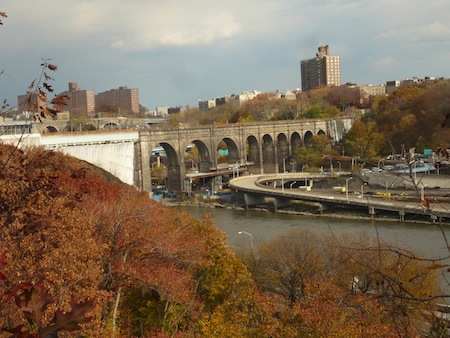
From the closed-off site of the bridge work, we had to exit to the street and walk a bit further north to re-enter and see a bit more, first passing by the front of the Highbridge Play Center, which has a big pool behind it and playgrounds in back.


Adjoining some playing fields is a large rocky hill. I summited it and got the brief sensation of having reached the top of a mountain.



On this very changeable day, rain was coming in. Exploring the northern half  of Highbridge Park will have to wait for another day – maybe the day the bridge walkway finally does reopen.
of Highbridge Park will have to wait for another day – maybe the day the bridge walkway finally does reopen.
Walking back to the subway, we encountered one of those wonderful New York City serendipities: a Greek food festival and bazaar at the Saint Spyridon Greek Orthodox Church, complete with live music. So we didn't even have to go home hungry, thirsty, or spiritually unfulfilled.

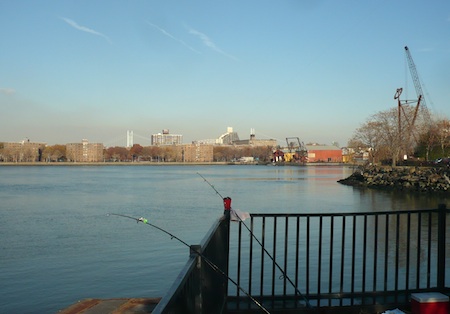
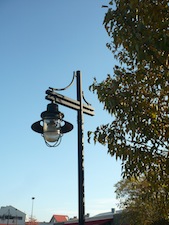
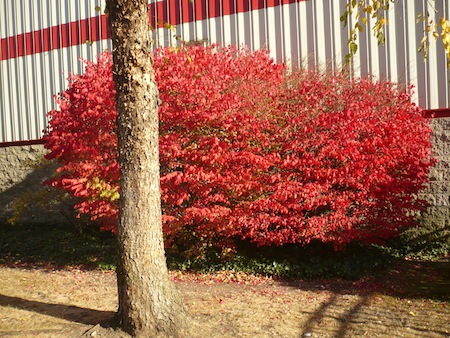
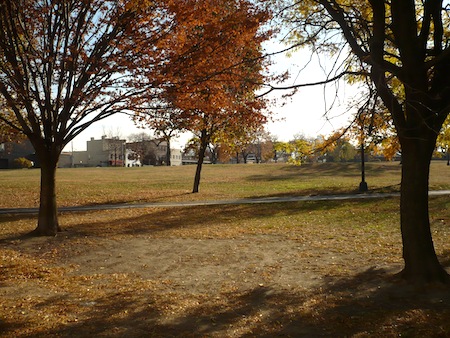
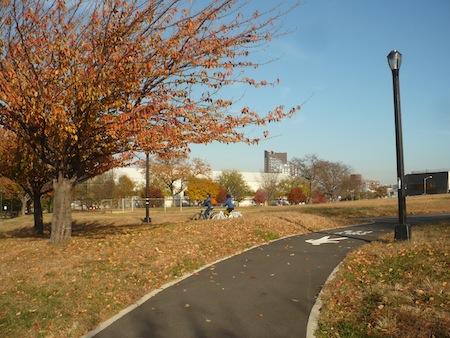
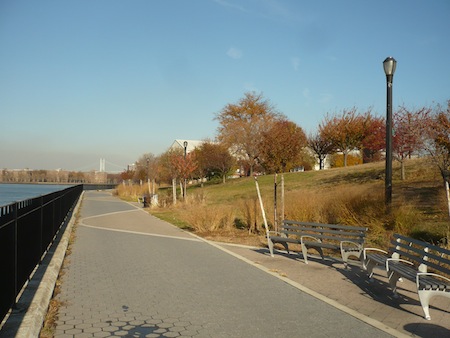
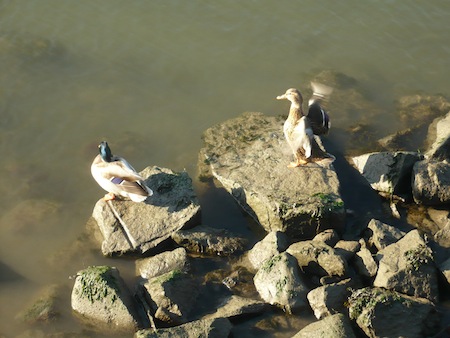
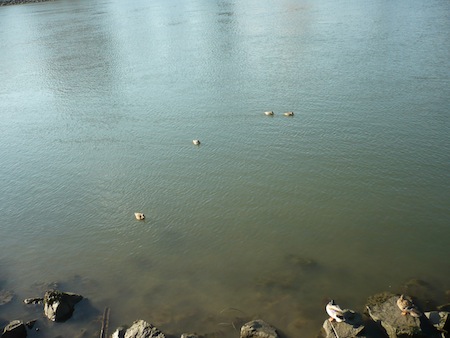
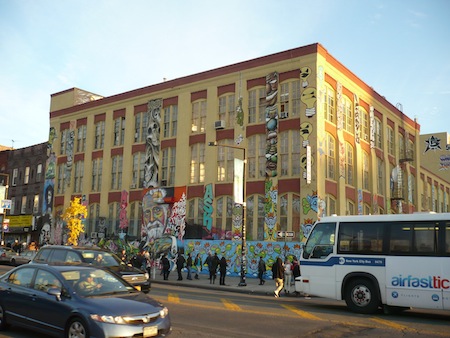


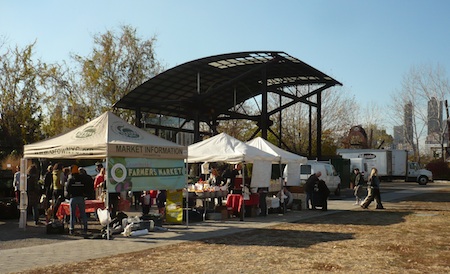
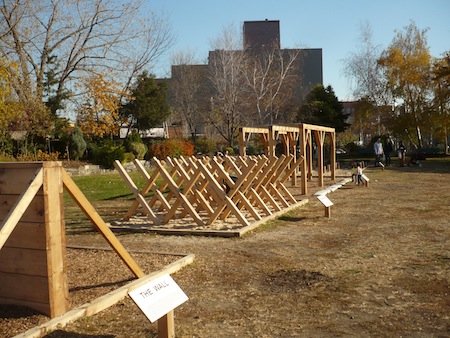
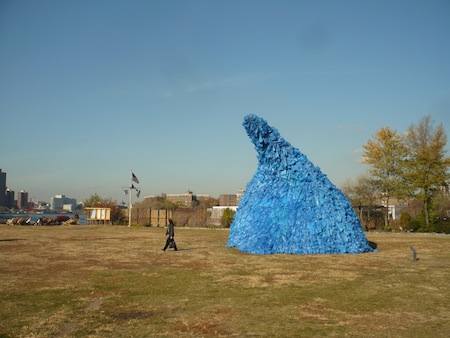



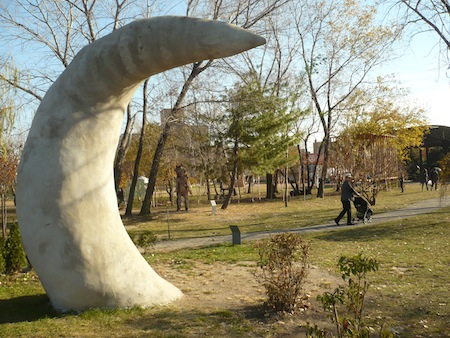
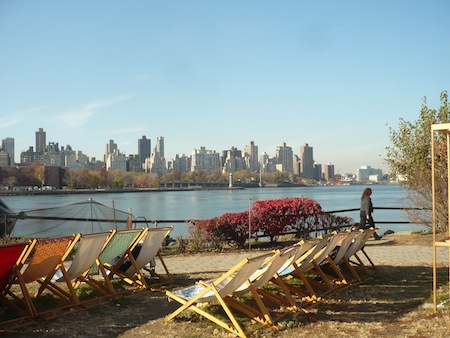
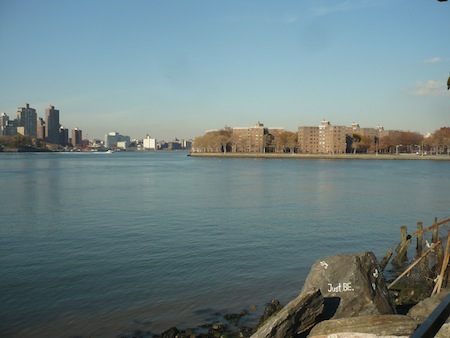
 Anyway, across the street is the
Anyway, across the street is the 







 so we doubled back and then walked north again alongside the park on Edgecombe Ave., reentering at the next opportunity.
so we doubled back and then walked north again alongside the park on Edgecombe Ave., reentering at the next opportunity.








